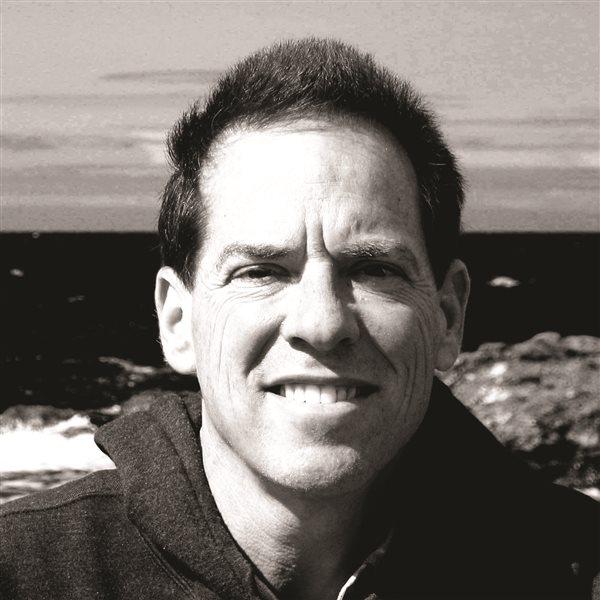Learning from new mistakes

"You can't fly home tomorrow," said the briefer. "To beat the weather you must leave now." That was no option. Jean and I had arrived in Las Vegas a few hours earlier and were joining our son and daughter-in-law, Austin and Desi, for dinner and a show. So we committed to an extra night and turned off the alarm clock before retiring.
Unfortunately another hour passed before our ride arrived, and 30 more minutes before we reached the airport. By now, additional showers threatened from the west. Worried, Jean and I huddled with Austin over the airport weather terminal. Although narrower than before, the band of weather had lengthened considerably, raising new concerns about us getting home.
"Looks like no problem flying down the Colorado River," Austin observed. Jean and I valued his opinion as a military pilot and meteorology grad. Indeed, if the weather blocked our eastward route we could easily land at Kingman or Bullhead City. "Would you rather enjoy another night in Vegas, Jean?" I offered. "Or try for home and chance overnighting in Kingman?"
"I realize there's quite an entertainment difference," she said, "but I'd hate to miss two days of work unless absolutely necessary. Besides, flying from Kingman tomorrow looks more promising than going from here. Let's try for home and make the most of wherever we land." Desi and Austin waved goodbye as we collected our clearance and taxied for takeoff.
As Jean and I traced the line of weather southward, it kept extending ahead of us-not until 140 miles southeast of Las Vegas could we finally circumvent it. By now another band of clouds obstructed our route to the east, fortunately containing little precipitation except for distant thunderstorms over Prescott. In a gargantuan zigzag, we steered northward between the two weather bands toward distant sunshine.
"Hopefully we can bypass this weather to the north," said Jean, noting the satellite weather display. "If not, we can land at Seligman." Several minutes passed.
"Look," said Jean, "an opening!" A distant glow now materialized along our desired route to Flagstaff.
"That could change pretty rapidly," I said, hesitating. Until now, scattered to broken ceilings had remained well above us, but to turn meant diving under a lower and darker cloud blanket fringed with virga.
"But you can see the horizon on the other side," said Jean. The outside air temperature was 2 degrees above freezing. Although precipitation might cool the air because of evaporation and downdrafts, there was still plenty of room to descend into warmer air if required.
"Well, OK, Jean...let's have a look, and turn around if necessary." We ducked under the dark ledge of clouds. Tantalized by brighter skies ahead, we targeted the familiar silhouette of Bill Williams Mountain. It was farther than it looked, we soon realized. Snow showers now began, but the visibility remained good.
"Greg, is that ice forming on the wing?" Sure enough, tiny flecks spattered the leading edge. The outside temperature now hovered at freezing, but then I realized I'd unknowingly drifted up several hundred feet. Descending to our previous altitude raised the temperature and vaporized the icy speckles. Still, this was disconcerting. Should we reverse course? Or continue toward brighter skies ahead? One glance back, and our decision was made--no hint of sunlight remained behind us, nor even a bright spot. Our escape window had closed.
"We'll land at Williams if necessary, Jean--it's only 15 miles ahead." To our relief the snow showers had thinned when we got there, and our hometown signpost of Humphreys Peak beckoned comfortingly from clear skies ahead.
"That was a little scary," said Jean, after we landed. "What should we have done differently?" Between our general flight conditions and having satellite weather onboard, we agreed to feeling good about our planning and decisions until cutting the corner toward home. At that point, however, it was obvious we should have continued north to Seligman and from there assessed whether to bypass the weather or land.
"I shouldn't have pushed you to take the shortcut, Greg."
"It was my leg to fly, Jean, and I accepted your suggestion. We made that decision together."
"What if things had gotten worse?"
"It wasn't a life-threatening situation-we had good visibility and plenty of ground clearance to descend into higher temperatures. What bothered me was letting our options diminish. Sure, Williams was nearby for landing. But had the ceiling or visibility suddenly deteriorated, we had few alternatives. Instrument flying was out of the question because of icing, so I'll admit to silently considering good roads to land on. That would have been inelegant at best. I guess we're never too experienced to learn by new mistakes."
Jean and I were out walking an hour later when snow began to fall. Bracing against the icy flakes, we thanked our good fortune in reaching Flagstaff rather than becoming stranded elsewhere. I phoned Austin.
"I'm surprised you and Mom made it all the way home," he said.
"So are we, Austin. So are we."
Greg Brown was the 2000 National Flight Instructor of the Year. His books include Flying Carpet, The Savvy Flight Instructor, The Turbine Pilot's Flight Manual, Job Hunting for Pilots, and You Can Fly! Visit his Web site.



